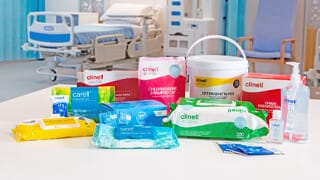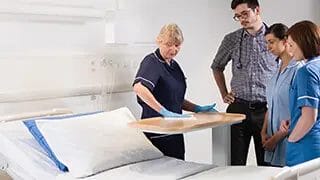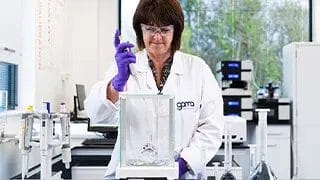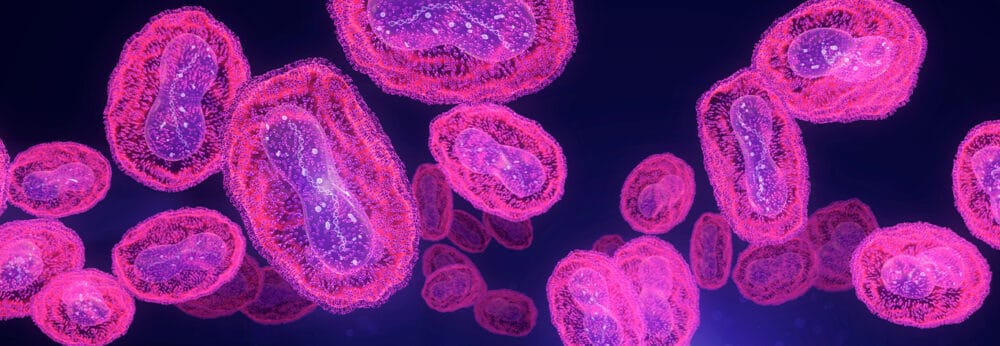Posted
3rd May 2022
Events and Exhibitions
Today on the blog, GAMA’s Clinical & Scientific Director, Dr. Phil Norville and Clinical Consultant, Martin Kiernan, share their highlights from ECCMID 2022.
Lisbon, Portugal, was home to the first face-to-face European Congress of Clinical Microbiology and Infectious Diseases (ECCMID) conference since the COVID pandemic and brought together a mix of specialties from healthcare institutions and universities across the globe. Across 4 days, the conference consisted of posters and talks from global experts covering a range of topics from emerging infectious diseases, antimicrobial resistance, diagnostics and therapeutics.
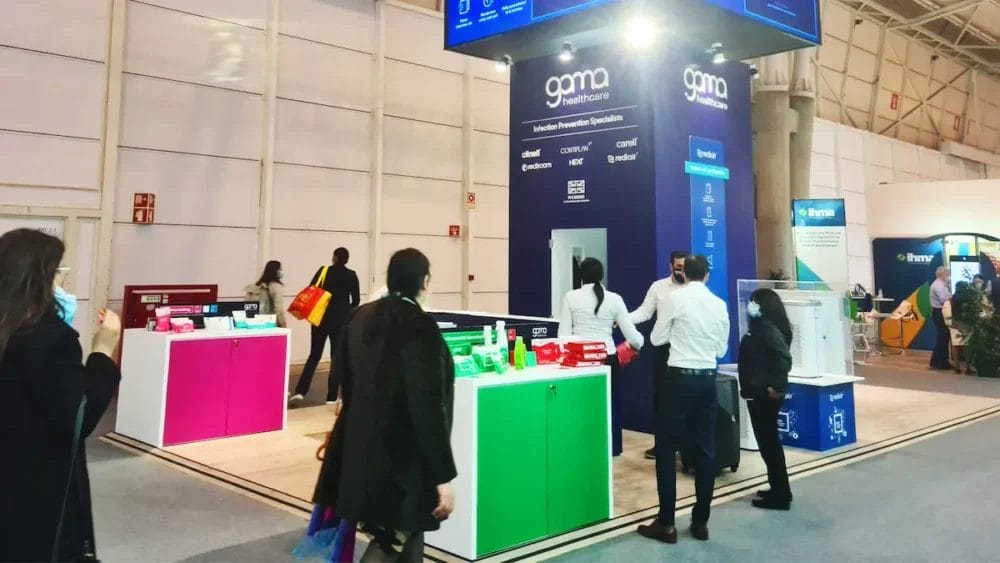
GAMA’s Clinical & Scientific Director, Dr. Phil Norville and Clinical Consultant, Martin Kiernan, attended in person and share below their highlights from an IPC perspective.
Emerging threat of a Gram-negative bacterium
Thomas Kol from Germany spoke about the emerging threat of a Gram-negative bacterium, Stenotrophomonas maltophilia, highlighting the recent surge in publications discussing S. maltophilia. S. maltophilia is known to cause infections in immunocompromised individuals and its ability to form biofilms may be one of the reasons it has been shown to survive in the environment for prolonged periods of time and demonstrate increased tolerance to disinfectants.
Acinetobacter in the hospital setting
Massimiliano Lucidi from Italy discussed Acinetobacter in the hospital setting and highlighted its long term survival on surfaces in comparison to some other Gram negative bacterium. Massimiliano mentioned the recent call from the World Health Organisation to develop new antibiotics to treat infections caused by multiple drug resistance bacteria such as Acinetobacter baumannii. The ability of A. baumannii to survive drying out (desiccation) in dry environments, was highlighted as being one of the ways the organism can survive in the hospital environment for prolonged periods (30-120 days). Interestingly, his research showed that cells could be resuscitated after long periods of being non-viable through exposure to commonly use biological fluids.
Return on investment from IPC interventions
Alessandro Cassini from Switzerland discussed the return on investment from selected infection prevention and control interventions in healthcare settings to limit the burden of SARS-CoV-2. Alessandro discussed how infection control measures, such as hand hygiene and the use of personal protective equipment (PPE) had contributed to reducing the number of new cases and admissions and thus, providing economic benefits. The importance of staff training when using PPE was also highlighted, he concluded that PPE is likely to be more effective in reducing transmission (providing enhanced economic benefit), when staff are competent in how to use and don and doff PPE correctly.
SARS-CoV-2 being airborne
Professor Stephanie Dancer gave an inspiring lecture entitled, “The year in IPC’’ focusing on routes of transmission of SARS-CoV-2. The lecture highlighted some of the current evidence which points towards SARS-CoV-2 being airborne and spread through the air. Prof. Dancer used various examples to highlight airborne transmission, including one study which showed that 58% of surfaces contaminated with viral genetic material (RNA) were isolated from a height of 1.5 metres or greater, meaning the virus could have only got to these areas via small aerosolised particles in the air, carrying the SARS-CoV-2 virus. The need to improve hospital ventilation through opening windows (where possible) and employing air filtration devices utilising HEPA filters was emphasised to reduce contamination in the air. The talk closed with a focus on how air remains the final medium to define and standardise for infection prevention and control.
RELATED CONTENT: Why ventilation is important & the role of air filtration units
Recent guidance on cleaning NICUs
ECCMID also hosted interesting poster presentations including a poster from a group at the UK Health and Safety Agency (UKHSA) on the persistence of Staph. capitis in neonatal intensive care units (NICUs), linking to the recently issued guidance on the cleaning and handling of incubators and other equipment in NICUs. The guidance recommends training on incubator cleaning, including principles around good cleaning methods – such as, working from clean to dirty, wipe in an ‘S’ shaped pattern and taking care not to go over the same area twice.
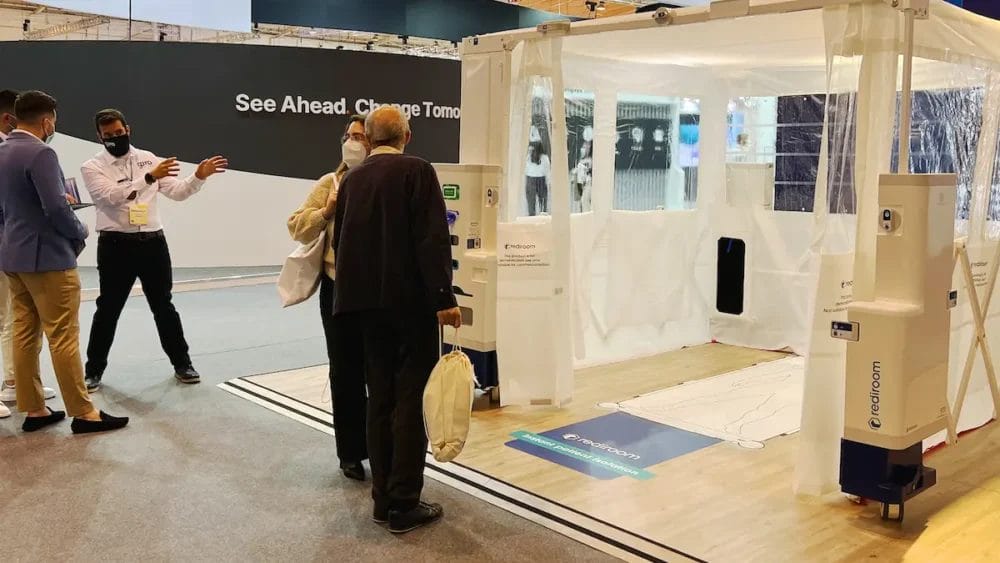
Other interesting research
Issy Centeleghe from Cardiff University (studying a PhD part funded by GAMA Healthcare) presented a poster on dual species dry surface biofilm, examining if pathogens are protected in these biofilms commonly found in dry hospital environments. Issy demonstrated that in dry surface biofilms (DSB) there may be a mechanism to allow microorganisms to persist for prolonged periods in the environment and also maybe a mechanism for reduced susceptibility to disinfectants.
Other research on GAMA’s mobile patient isolation room, Rediroom and Clinell Universal Wipes were also presented but will be covered in more detail in future blog posts.
ECCMID 2023 will be hosted in Copenhagen, Denmark between 15th – 18th April and it will be interesting to see what novel research in such a rapidly evolving field brings. If you’d like to find out more about the recent events the GAMA Healthcare team has attended, visit our Events and Exhibitions section on our blog.
SHARE THIS ARTICLE
Tags
Latest News
Celebrating 20 Years of GAMA Healthcare: Our Story
This month, GAMA Healthcare celebrates 20 years of helping prevent…
Norovirus: Understanding its transmission and prevention in the UK
Introduction Norovirus is recognised as the leading cause of viral gastroenteritis…
Clean Between to Reduce Healthcare-Associated Infections
Healthcare-associated infections (HAIs) are a significant concern for healthcare facilities…
Mpox: emergence of a new threat
A new threat related to mpox is emerging, in the…

